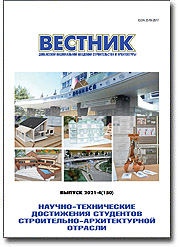Comparative Analysis of Filling Stations. Petrol Stations. Advantages and Disadvantages
Abstract: An analysis of the number of vehicles (vehicles) in the world allows us to draw conclusions about a significant increase in cars in the first half of this century. Road transport in most countries has become the most affordable and convenient means of transport. However, with the increase in the fleet of cars, fuel needs for them and emissions of harmful substances to the environment increase. The current state of road transport by fuel types is as follows: gasoline engines (74 %), diesel (23.6 %), gas (~ 1 %), hybrid (about 1 %), alternative fuel and hydrogen less than 0.4 % [1]. In the context of the scientific research work of students of the mechanical faculty «Comparative Analysis of Filling Stations», this work presents the advantages and disadvantages of gasoline filling stations.
Keywords: vehicle, fuel, gasoline, diesel, filling station.
Pages: 29-32.
For citation:
For citation: Sobol, O. V.; Medvedev, M. A.; Burlaka, V. D. Comparative Analysis of Filling Stations. Petrol Stations. Advantages and Disadvantages. – Text : electronic. – In: <em>Proceeding of the Donbas National Academy of Civil Engineering and Architecture</em>. – 2021. – Issue 2021-4(150) Scientific and technical achievements of students of the construction and architectural industry. – Р. 29-32. – URL: https://donnasa.ru/publish_house/journals/vestnik/2021/2021-4(150)/st_06_sobol_medvedev_burlaka.pdf (date of access: 20.05.2025). – ISSN 2519-2817.

Issue 2021-4 (150)
Journal: Proceeding of the Donbas National Academy of Civil Engineering and Architecture
Publish house: Donbas National Academy of Civil Engineering and Architecture
Journal: Proceeding of the Donbas National Academy of Civil Engineering and Architecture
Publish house: Donbas National Academy of Civil Engineering and Architecture
